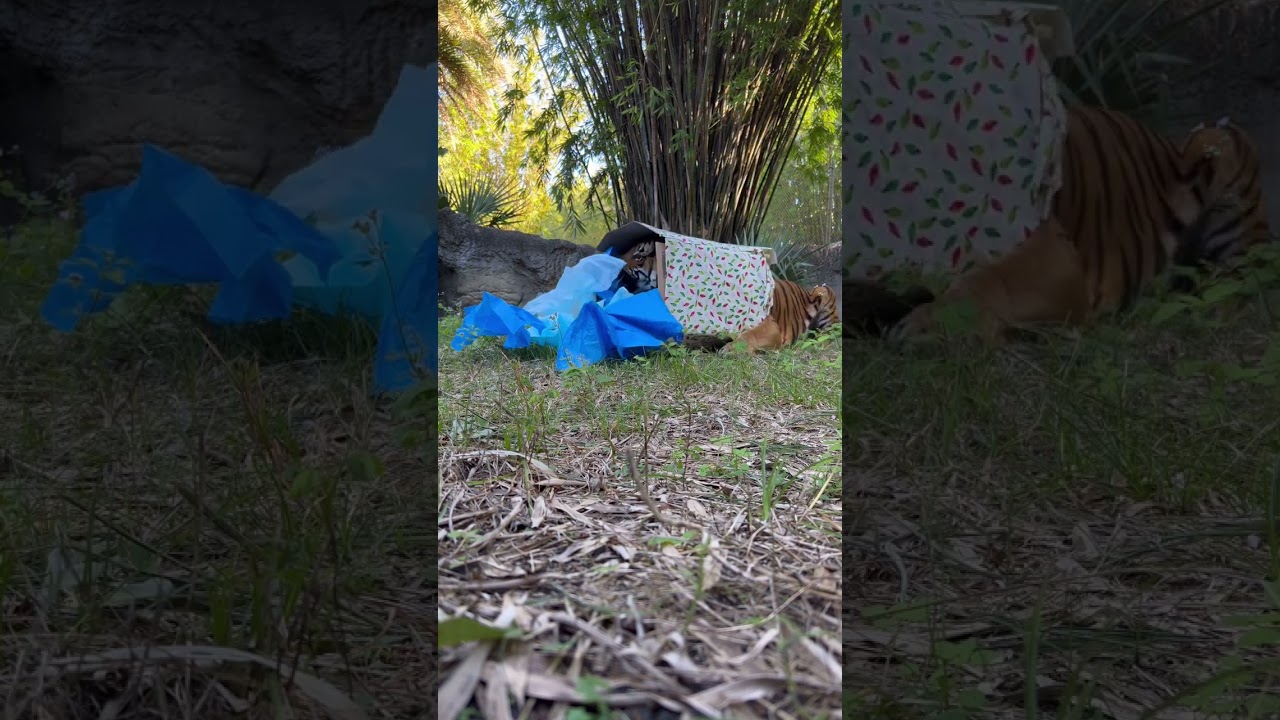– Introduction to the recent birth of three Malayan tiger cubs at a zoo, focusing on the first cub’s gender reveal.
– Insights into the challenges facing Malayan tigers in the wild and the significance of breeding programs.
– The role of zookeepers and zoological institutions in conserving and propagating endangered species.
– Ways the public can engage with and support efforts to protect and study Malayan tigers.
Tigers have long captured the human imagination with grace and power, and the vivid stripes adorned their fur. Among the distinct subspecies of these big cats, the Malayan tiger holds a particularly precarious position in the biodiversity stakes. It is with a sense of marvel and urgency that we turn our attention to a zoo that has recently had the privilege of welcoming a new generation of these sublime creatures into the world.
On a clear, brisk morning in November, the atmosphere at the zoo was charged with a subdued yet palpable excitement. Cinta, the resident female Malayan tiger, displayed all the signs of a soon-to-be new mother. Her enclosure, usually a stage for her fluid, feline grace, had transformed into a nurturing space filled with the whispers of upcoming life. The hush broke on November 5, 2023, as three cubs were born, each a tiny beacon of hope for their species, which is teetering on the edge of extinction in the wild.
The gender reveal of these cubs is not just a revelatory moment for the zookeepers and the wider public but a pivotal point in the conservation puzzle these majestic creatures present. The staff, versed in the ways of these charismatic megafauna, waited with bated breath as the vet approached the first cub. It’s a boy! This news elicited a mixture of relief and excitement. In their prime, male tigers serve as linchpins for breeding programs that aim to preserve genetic diversity within populations held in captivity.
As we unwrap the layers of this story, we’ll explore the vibrant tapestry of life that surrounds the Malayan tiger, from the urgent conservation efforts and the essential role of zoos in habitat and species preservation to the intriguing daily routines of these stunning predators and how everyday folks can contribute to the grand narrative of their survival.
Malayan tigers are lesser known than their Bengal or Siberian relatives, yet they are just as deserving of our admiration and focus. These apex predators hail from the heart of the Malay Peninsula, where they play a critical role in maintaining the balance of their native ecosystems. However, their existence is under dire threat due to habitat destruction and poaching. Figures suggest there might only be less than 200 individuals left in the wild, which catapults the role of zoological gardens into the spotlight.
Zoos are often seen merely as places of recreation where families can spend a sunny afternoon marveling at the wild’s representatives. Yet, beneath this layer of leisure lies a network of committed individuals and sophisticated programs focused on preserving the world’s most vulnerable species. Interaction with tigers at zoos raises public awareness and fuels a passion for protecting these creatures beyond the confines of captive environments.
Zookeepers are stewards, dedicating their lives to understanding the subtle nuances of their charges – the signal in a low growl, the mood behind a tail flick, and the slightest shift in daily behavior that might indicate stress or illness. They work with tireless devotion, often behind the scenes, to craft diets, enrichments, and living spaces that mimic the tigers’ natural habitats – no small feat considering the constraints of a captive setting.
Breeding programs for endangered species like the Malayan tiger are complex, highly controlled undertakings underpinned by scientific research and genetic management. They are about more than simply creating cute cubs for the public to coo over. They are about ensuring genetic variability, maintaining a backup population, and, in some cases, working towards the ambitious goal of reintroducing these animals into the wild.
With the birth of the three cubs, we witness a profound responsibility falling onto the shoulders of the zoo staff. Raising these little ones is no mean feat. The first few months of life are critical. Cubs are particularly vulnerable and greatly depend upon the care and expertise of their human guardians.
The successful breeding of these tigers serves as a testament to the unwavering efforts of conservationists and a reason for optimism in our sometimes overwhelming fight against biodiversity loss. Inked through the pages of conservation history are instances where concerted efforts have pulled species back from the brink, providing real hope that Malayan tigers can follow in these triumphant footprints.
Beyond the boundaries of zoos, we all have a part to play in the story of these tigers. Engaging with conservation campaigns, supporting sustainable practices that reduce habitat destruction, reporting illegal wildlife trafficking, and educating those around us about the plight of tigers can all make a difference. Through our actions, we can contribute to a future where the rustle of leaves under a tiger’s paw is not a mere echo in the forest but a living, breathing reality.
In conclusion, the announcement of the gender of the first Malayan tiger cub, the tender care and diligence of the zoo staff, and the awe-inspiring presence of the tigers themselves tug at our collective conscience. It reminds us that each of us bears the weight of responsibility to nurture our planet’s gifts and to ensure that the roar of the tiger is not silenced in the wilderness it once called home.
As we reflect on this tiny cub’s beginnings and the gravity of what his birth represents, let us rally behind the commitment to keep his kind with us. May he grow to be a majestic ambassador for his species, inspiring us to become guardians of the wild in our everyday lives.
*****
Source Description
On November 5, 2023, Cinta gave birth to three Malayan tiger cubs. Here’s the sex of the first one!


